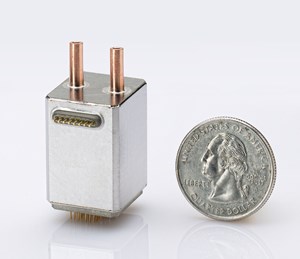Northrop Grumman Corporation has developed and demonstrated a new micro-Nuclear Magnetic Resonance Gyro (micro-NMRG) prototype for the Defense Advanced Research Projects Agency (DARPA), providing precision navigation for size- and power-constrained applications.
 Northrop Grumman has successfully developed and demonstrated new micro-Nuclear Magnetic Resonance Gyro technology that offers near navigation-grade performance.
Northrop Grumman has successfully developed and demonstrated new micro-Nuclear Magnetic Resonance Gyro technology that offers near navigation-grade performance.
The development of a hermetically sealed micro-NMRG that meets precision navigation requirements along with a successful prototype demonstration marks the fourth and final phase of DARPA's Navigation-Grade Integrated Micro Gyroscopes (NGIMG) program. The culmination of the eight-year program is a micro-NMRG that offers near navigation-grade performance for the next generation of high-precision inertial sensors.
Northrop Grumman's micro-NMRG technology uses the spin of atomic nuclei to detect and measure rotation, providing comparable performance to a navigation-grade fiber-optic gyro in a small, lightweight, low power package. Additionally, the gyro has no moving parts and is not inherently sensitive to vibration and acceleration. The technology can be used in any application requiring small size and low power precision navigation, including personal and unmanned vehicle navigation in GPS-denied or GPS-challenged locations.
"Our miniature gyro technology offers unprecedented size, weight and power savings in a compact package, exceeding program requirements," said Charles Volk, vice president of Northrop Grumman's Advanced Navigation Systems business unit. "This important technology can help protect our warfighters by offering highly accurate positioning information, regardless of GPS availability."
The NGIMG effort is part of DARPA's Micro-Technology for Positioning, Navigation and Timing program that aims to develop technology for self-contained, chip-scale inertial navigation and precision guidance. Northrop Grumman began the first phase of the NGIMG effort in October 2005 and has consistently met or exceeded the performance goals of each program phase.